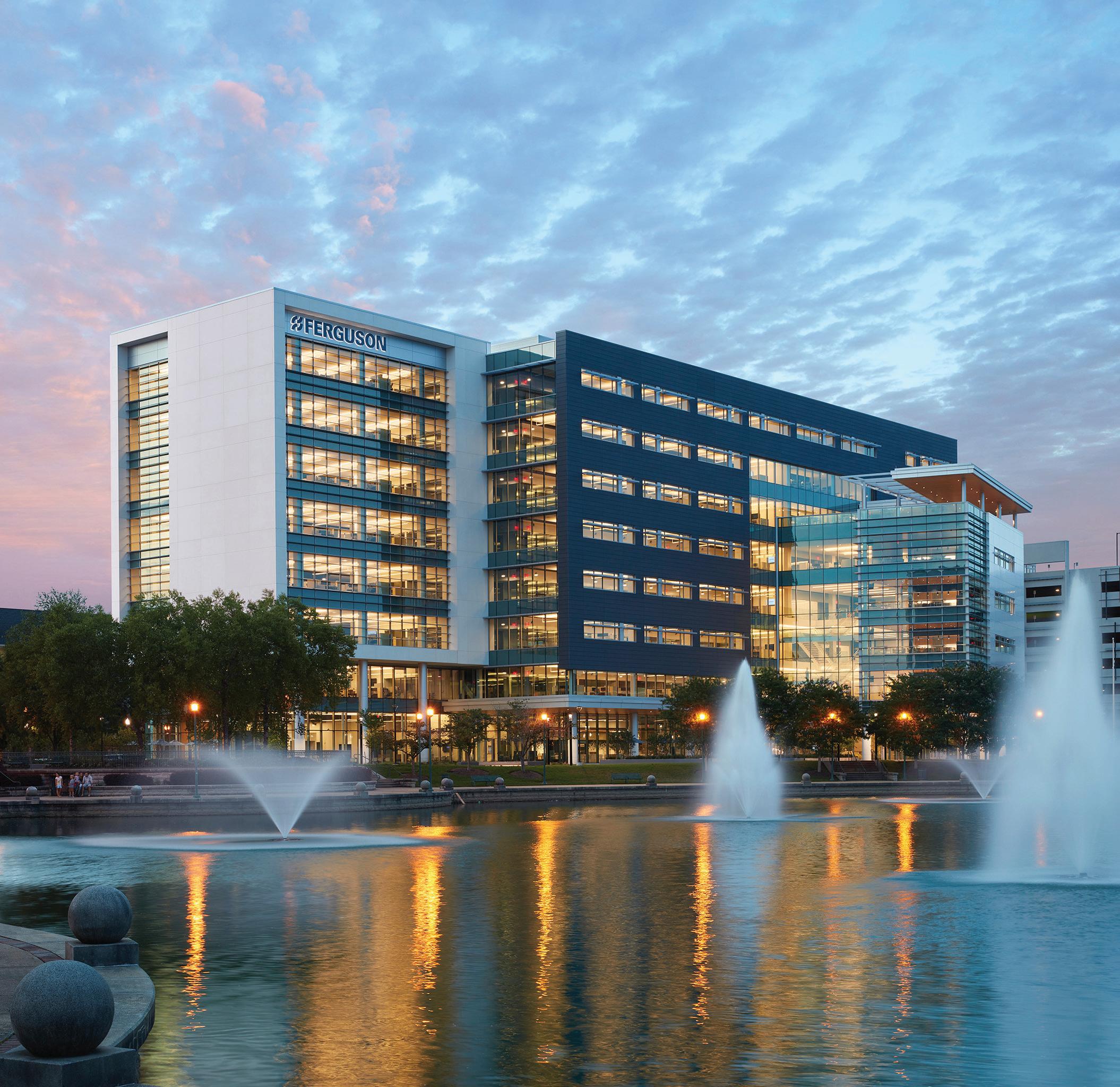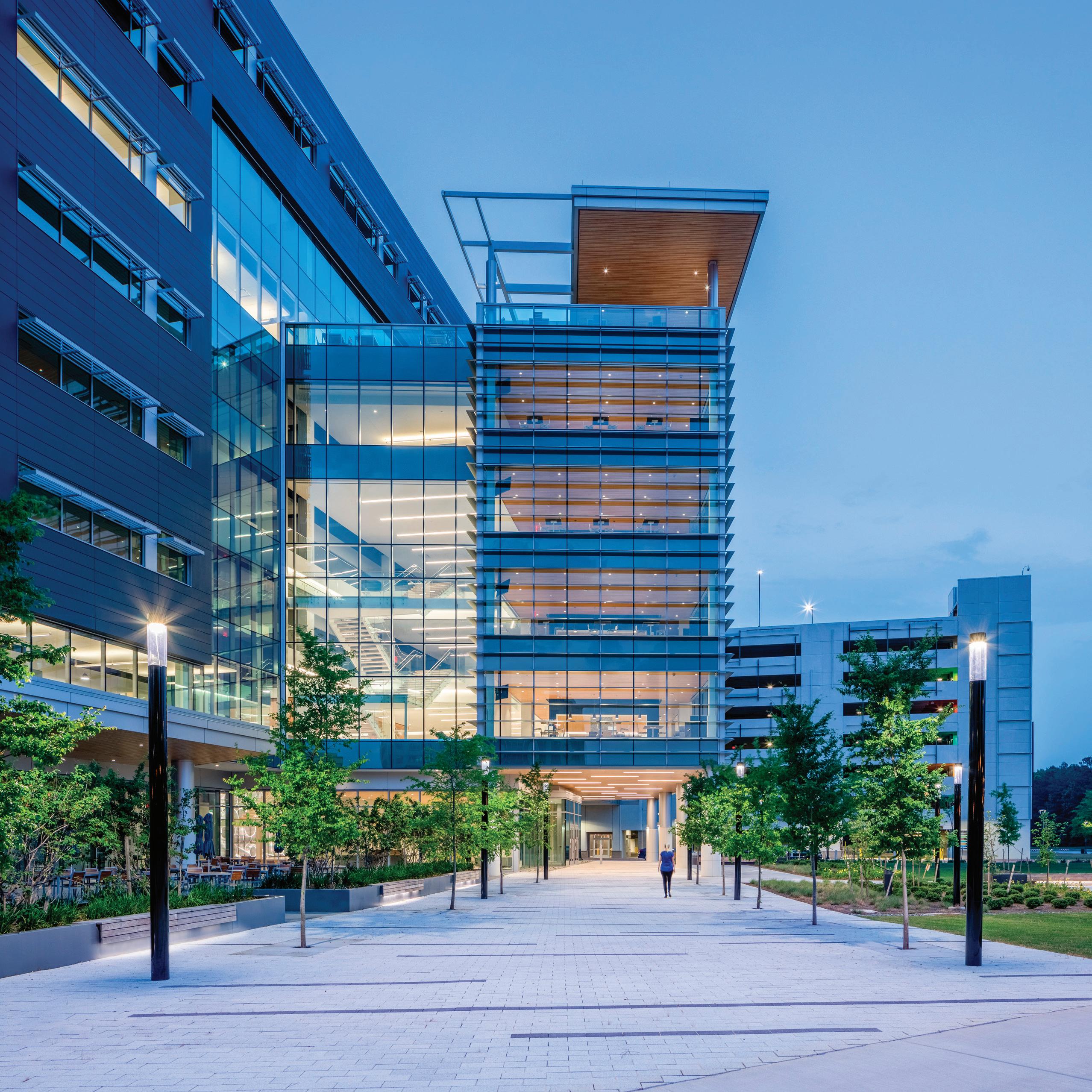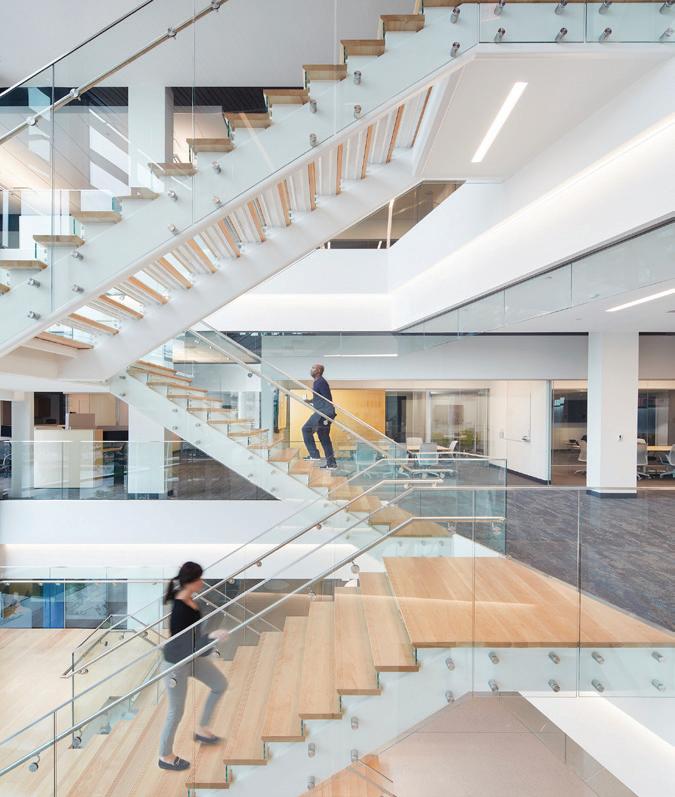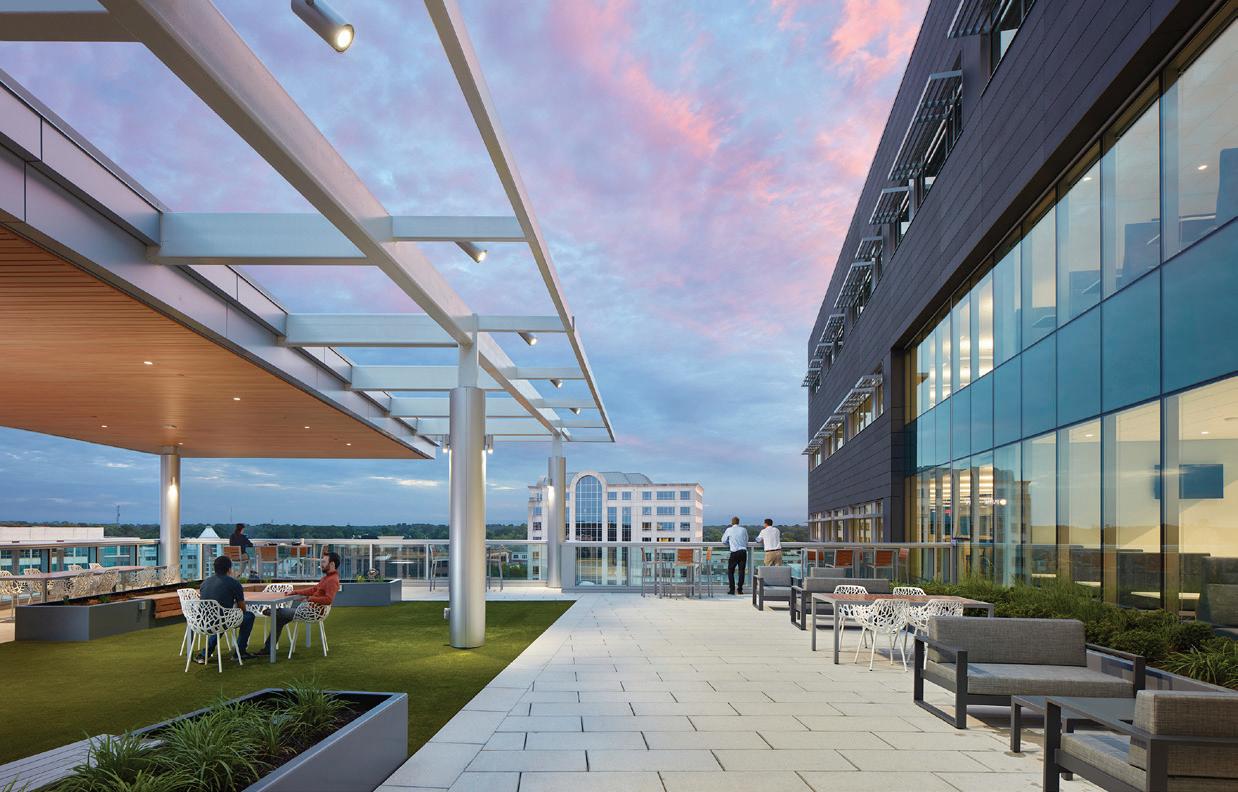
1 minute read
FERGUSON HEADQUARTERS
Facing a need to expand their headquarters in Newport News, Ferguson partnered with Clark Nexsen to create an amenity-rich, energy efficient, collaborative space for their associates. At the core of its design is a shift towards transparency, openness, and connectivity, and sustainability both within the company and the community at large. The design solution kept a fairly narrow footprint in the optimum building orientation to maximize both daylighting and views, benefitting occupant well-being and reducing the need for artificial lighting. The open office concept reduces material use, and interior rooms such as flexible offices and meeting spaces feature glass wall systems to allow daylight through to the building core. The low solar heat gain coefficient of the glass has a significant impact on the building’s energy efficiency, and shading devices on the east, south, and west facades further control glare and heat gain without interrupting views.
Both inside and outside, the design prioritizes creating opportunities to promote interaction and community. A multilevel glass atrium, open lobby space, and monumental staircase connect multiple levels and encourage people to use the stairs rather than elevators. Ferguson associates have access to a variety of outdoor training and dining spaces and a rooftop terrace. Additionally, prior to the construction of HQ3, the site served as a ‘city center’ for residents to gather, and the design preserves community access. Rather than walling this site off from the city, a pathway leads under the building and into the plaza allowing the public to enjoy this outdoor plaza.
The HVAC system has a number of features that contribute to the significant reduction in pEUI. An energy recovery ventilator transfers heat between the exhaust and outdoor air streams using a total enthalpy recovery wheel. A thermal storage system is used to shift electrical demand for cooling from peak daytime hours to off-peak nighttime hours by enabling the chillers to produce ice at night, which is then melted during the day while the chillers remain off. Both the cooling and heating systems also feature a high degree of controllability, allowing them to meet demand with very little waste.














